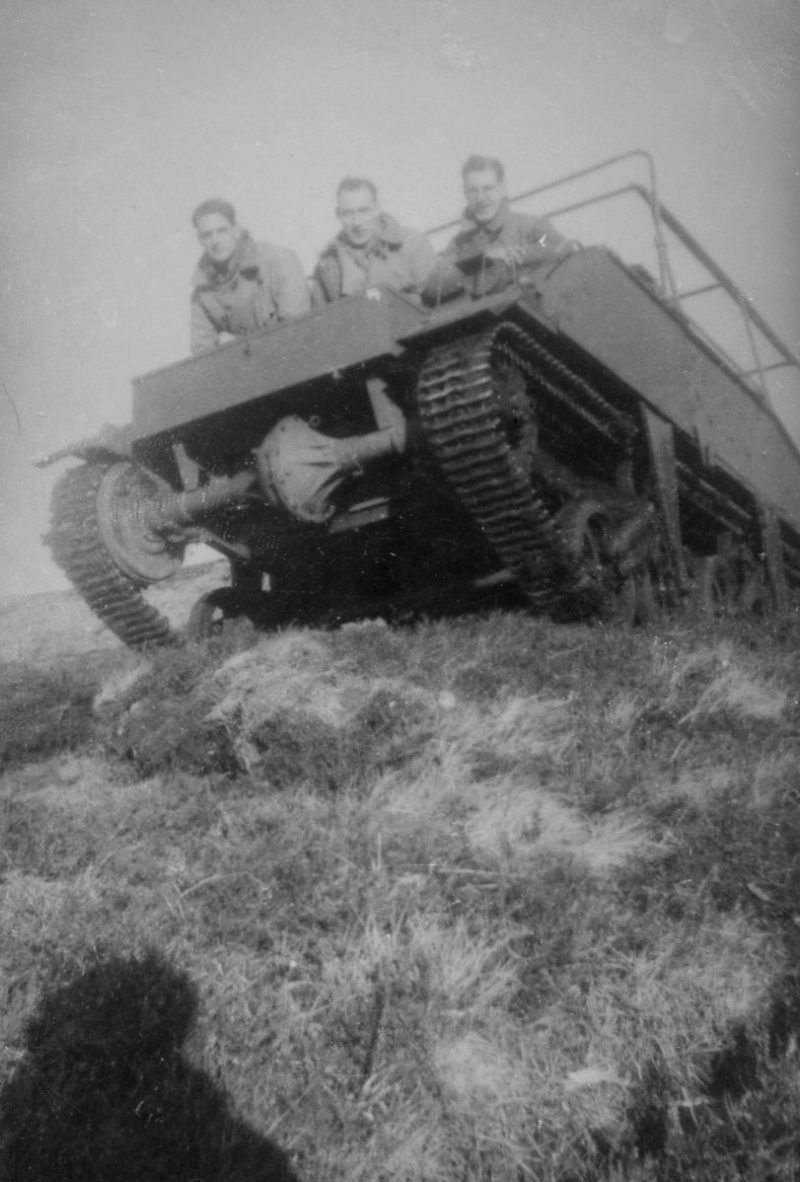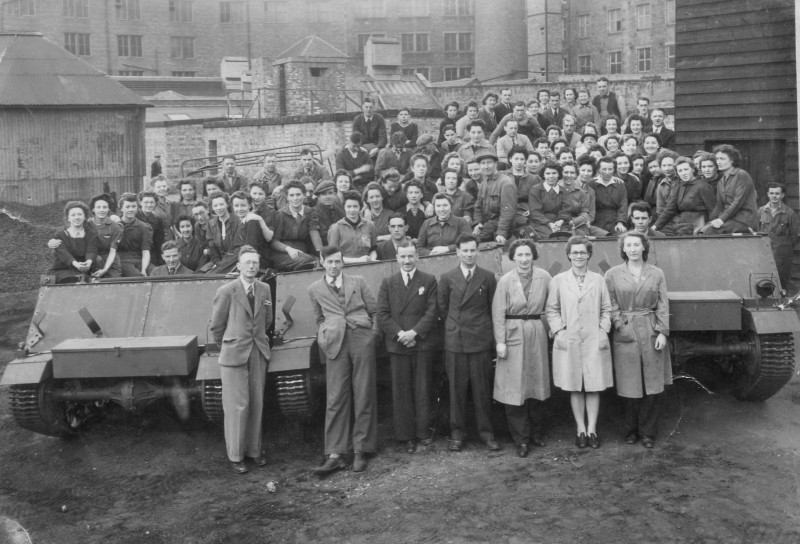The Loyd Carrier, officially the ‘Carrier, Tracked, Personnel Carrying’, was designed by Captain Vivian Graham Loyd MC (1894-1972) in the late 1930's. It was not his first attempt at armoured vehicle design, as Loyd had previously worked with Sir John V. Carden (1892-1935) on the famous Carden-Loyd series of Tankettes.
Design
The Loyd Carrier was part of a rapid-development program, so many of the carrier’s components were borrowed from other tried and trusted vehicles. The vehicle was designed around the drive systems of the 15cwt (0.76 tonne) 4×2 Fordson 7V truck. This included the engine (an 85hp Ford V8 Side-valve), gearbox, transmission, and front axle. The track, drive sprockets, and suspension units were all taken from the Universal Carrier. The chassis was also borrowed from the Fordson truck.
Mild steel bodywork was added. A large, sloped, 0.27 inch (7 mm) thick armoured plate (known as the ‘BP Plate’ in Loyd’s manuals) was placed at the front of the vehicle via bolts at the front and on the sides of the hull. This was enough to deflect small arms fire. A long stowage box was often placed in front of this sloped plate, above the exposed front axle. Pioneering tools were then stowed atop this box, with spare wheels stowed on the glacis.
The upper hull was enclosed at the sides and front but was open at the rear without a roof. This was not seen as an issue as the Carrier was not a fighting vehicle and, as such, did not need extensive protection or armament. A single Bren Light Machine Gun was sometimes carried for defensive purposes. There was an option to attach a canvas roof to protect the occupants from the elements. This was supported by a three-piece framework.
Operation
The Ford V8 engine was located at the rear of the Carrier, with the radiator behind it. The engine was located centrally at the rear, in a box-like structure. Passage into the crew compartment could be gained on each side of the engine. The drive shaft took the power from the engine forward to the exposed front axle, to which the sprocket wheels that drove the track were attached.
Both the drive wheels and idler wheels were fitted with brakes for steering. Steering was actuated by means of the steering tillers in the driver’s position. Braking the left track would turn the vehicle left, and vice-versa.
The suspension was of the Horstmann type, consisting of two double-wheel bogies mounted at the center of the vehicle. Single rollers were mounted atop the bogies to support the return of the track.
Variants
There were three types of Loyd Carrier, all identified as ‘Numbers’. The only major difference between these was the engine type. The rest of the vehicle remained unchanged. There were also two ‘Marks’ with different braking systems. The vehicles were used in multiple roles during the War, all with their own designations.
Numbers
No. 1: 85hp British Ford V8 and gearbox
No. 2: 90hp US Ford V8 and gearbox
No.3: 85hp Ford Canada V8 and gearbox
Marks
Mark I: Bendix brake system.
Mark II: Girling brake system.
Roles
Tracked Personnel Carrier (TPC): Troop carrier variant. Able to transport 8 fully loaded troops or equal weight in cargo. Equipped with internal seating for troops, as well as seating on the track guards. Armor surrounded the entire compartment.
Tracked Towing (TT): The most produced variant of the vehicle. Predominantly used to tow heavy armament, such as the Ordnance ML 4.2 inch Mortar and the Ordnance QF 2 and 6 Pounder Anti-Tank Guns, as well as carrying their respective crews. It was equipped with four seats for the gun crew, and ammunition stowage on the track guards. Armor was only found on the front quarter of the variant. For a short time, this vehicle had its own unique title of ‘Tractor Anti-Tank, Mk. I’
Tracked Cable Layer Mechanical (TCLM): A variant used exclusively by the Royal Corps of Signals (RCS). It carried a large spool of telegraph wire. The vehicle was un-armoured.
Tracked Starting and Charging (TS&C): A support vehicle to armoured regiments. Used to charge flat batteries and help start tank engines. It was equipped with 30 volt and 12 volt DC dynamos driven from the gearbox. It also carried spare 30 volt, 300 amp/hr battery units. The vehicle was un-armoured with the charging unit positioned against the hull plates on both sides. These vehicles were often nicknamed ‘Slaves’.
Production
The prototype vehicle was tested by the British Army in late 1939. An initial order of 200 vehicles soon followed. Production started at Loyd’s own company, Vivian Loyd & Co. in Camberley, Surrey (over 2700 built). In later years, production moved to larger firms, including the Ford Motor Company and Wolseley Motors (who built 13,000 examples between them), Dennis Brothers Ltd, Aveling & Barford, Harland Engineering Co. and the Sentinel Waggon Works. In total, 26,000 Loyd carriers were built from 1939 to 1944.
Harland Engineering Co. - Alloa
Harland Engineering was asked to help produce the Loyd Carrier for the war effort. Below are some pictures taken during trials:



Images from Old Alloa Photos Facebook Group
Service During World War Two
Early in the War, the TT and TPC variants were used extensively by the Royal Engineer Chemical Warfare Companies. However, most of Chemical Units were disbanded or re-purposed by 1943 to free up their 4.2-inch mortars for the regular infantry. The carriers were then assigned to units equipped with the mortars.
The TT variant was the most common of the Loyd Carriers and was deployed in the largest numbers. From D-Day onwards, they were used to tow weapons like 6-Pounder AT guns from battlefield to battlefield. They saw action throughout the fighting in Normandy.
In service with the Royal Electrical Mechanical Engineers (REME), the carriers were often paired with Caterpillar D8 tractors for tank recovery. The Carrier was used to carry spare parts and recovery apparatus.
Like most of the carrier vehicles, the Loyd Carrier continued to find use after the Second World War in other European armies. The Belgian, Danish and Dutch armies purchased surplus Loyd Carriers from the British.
